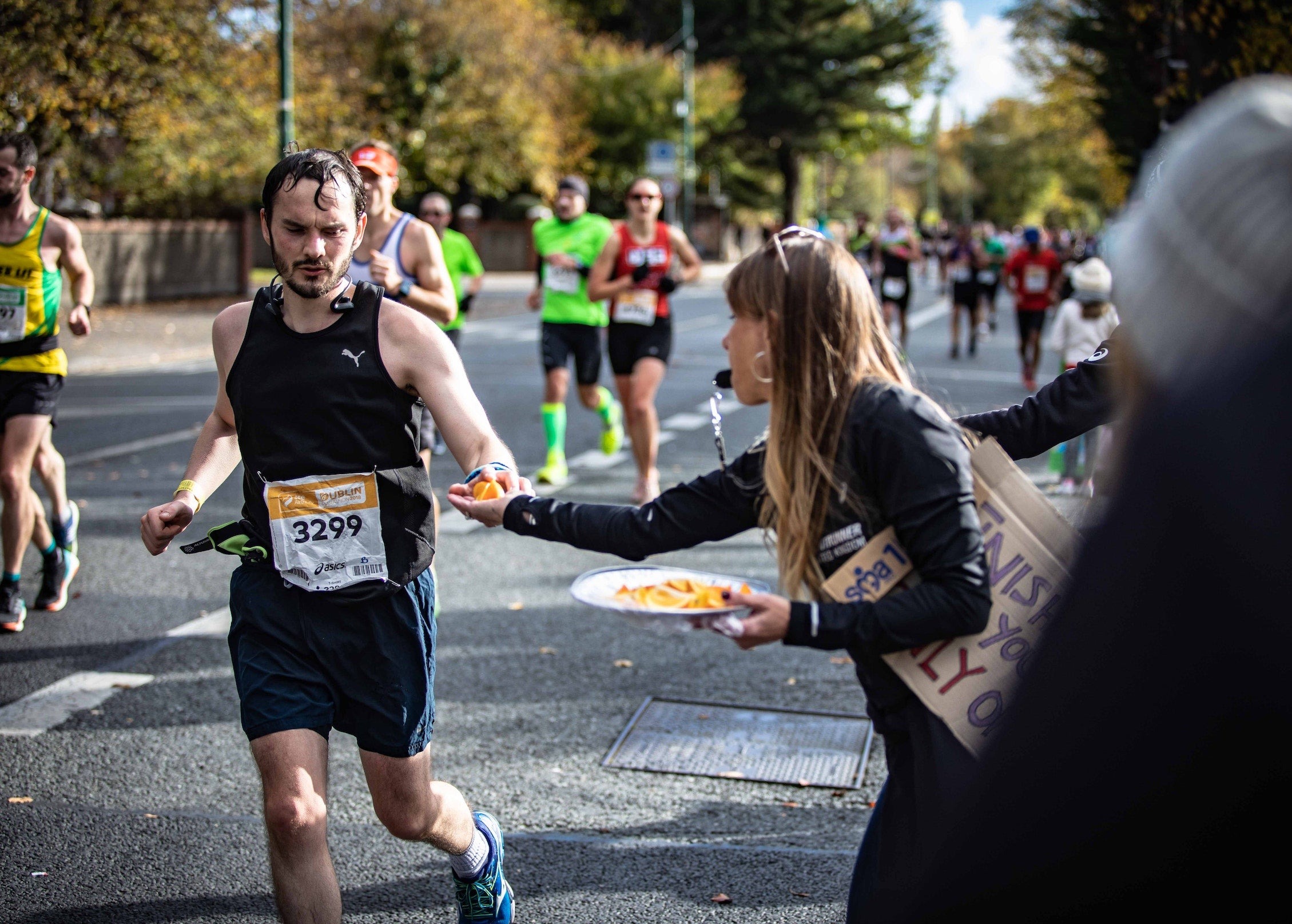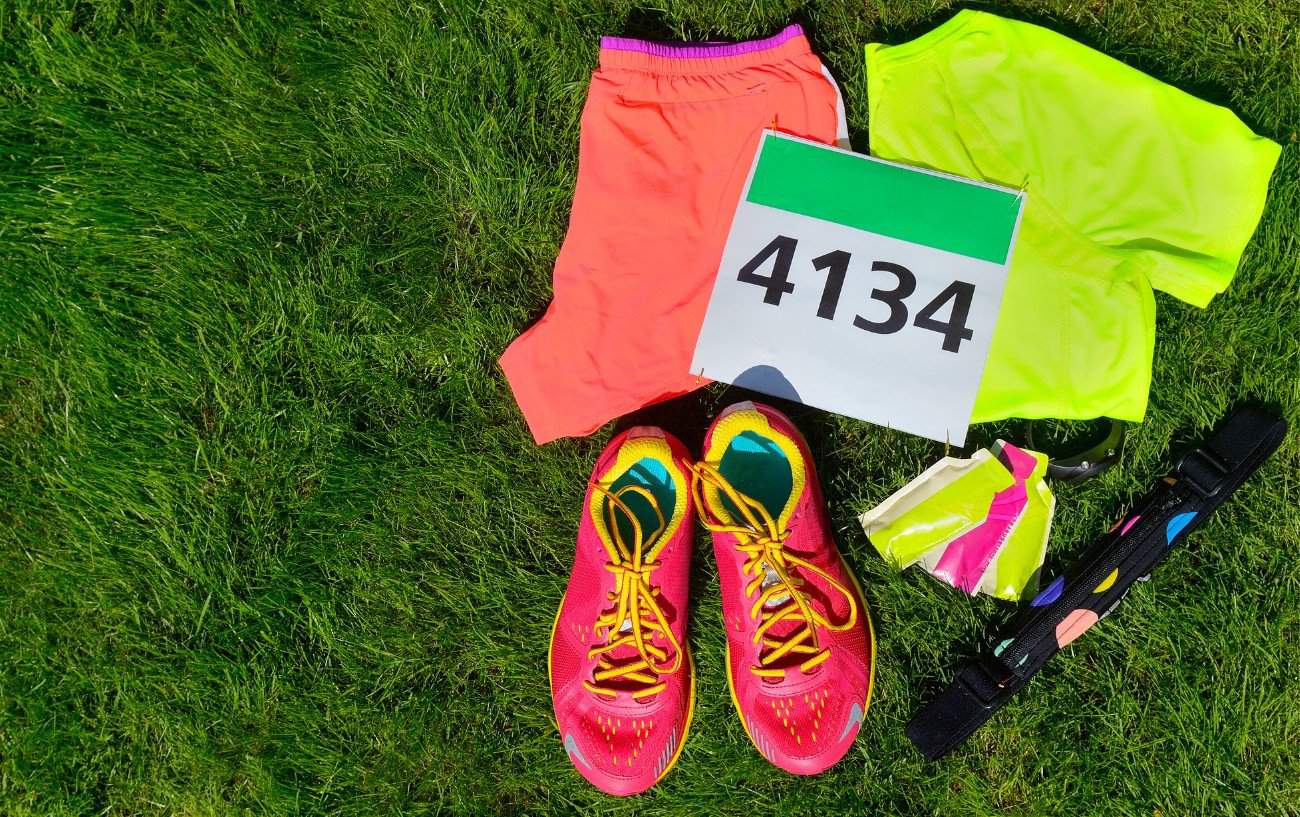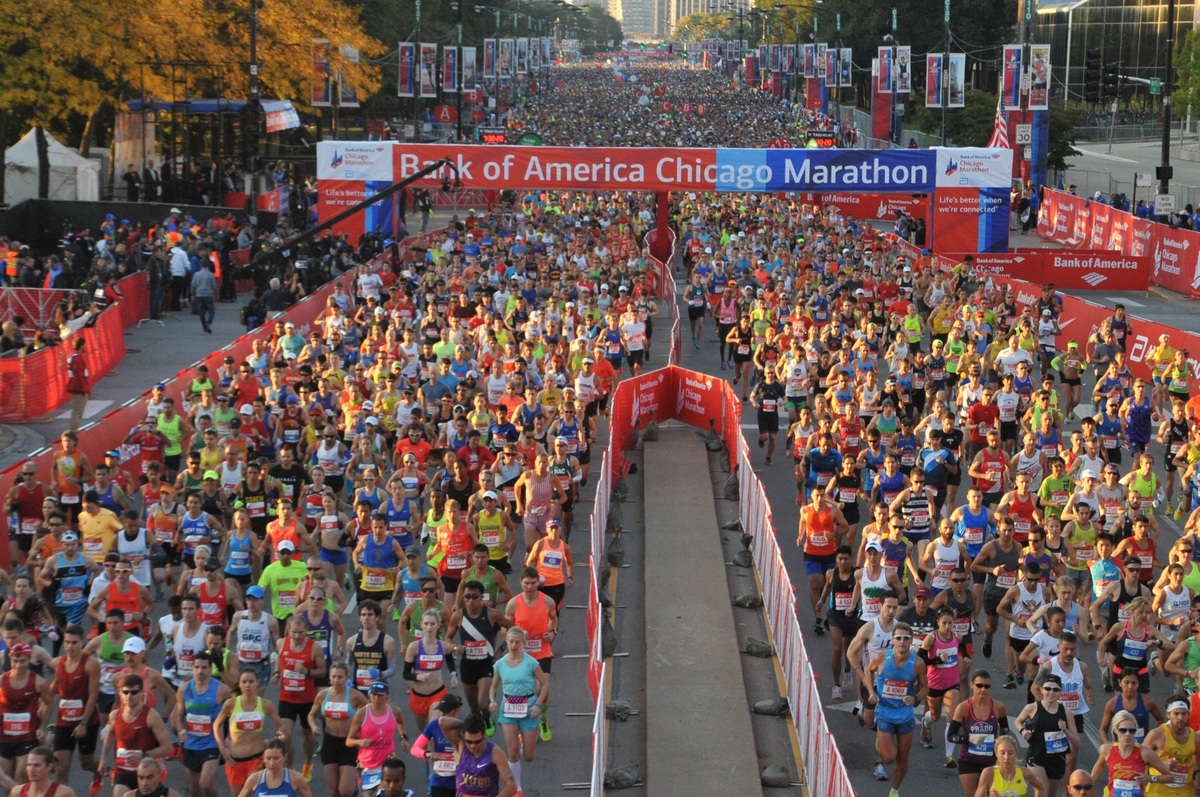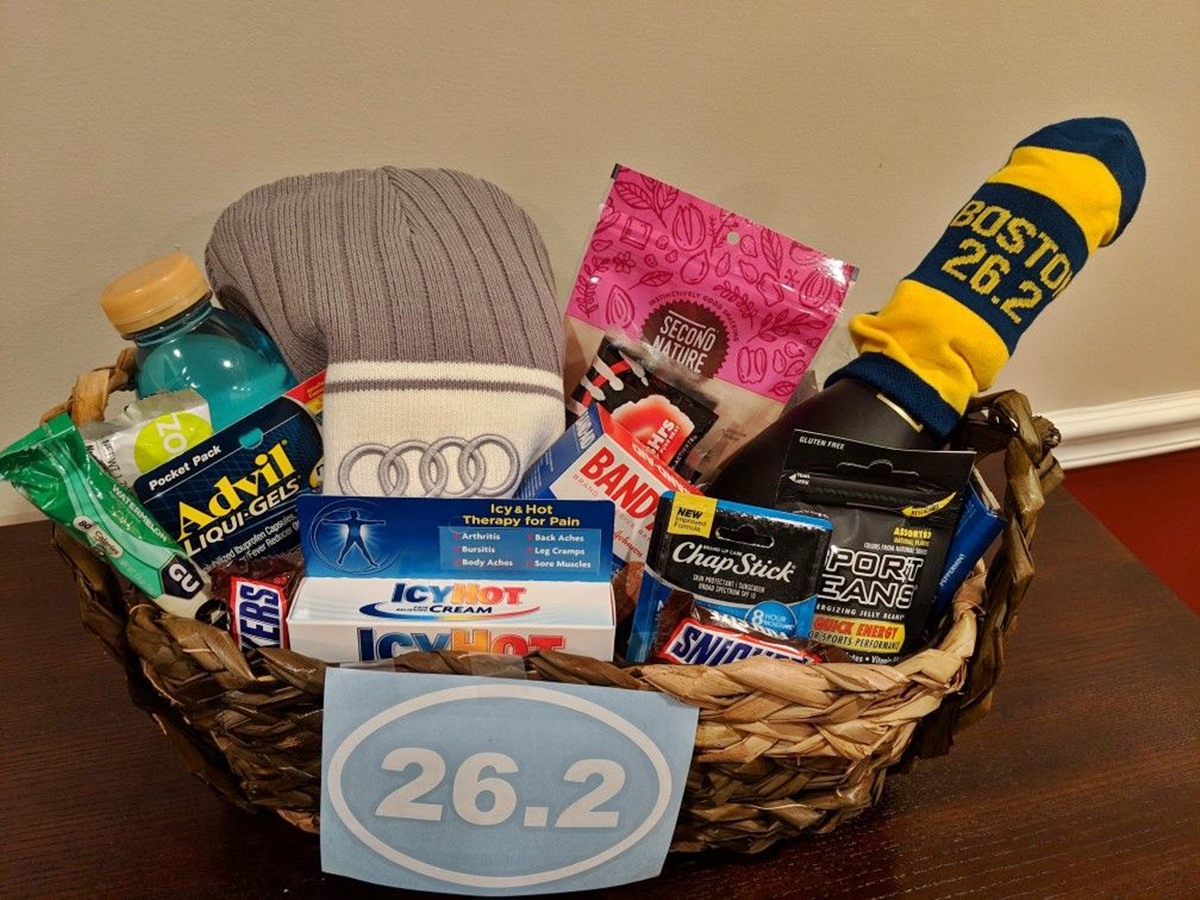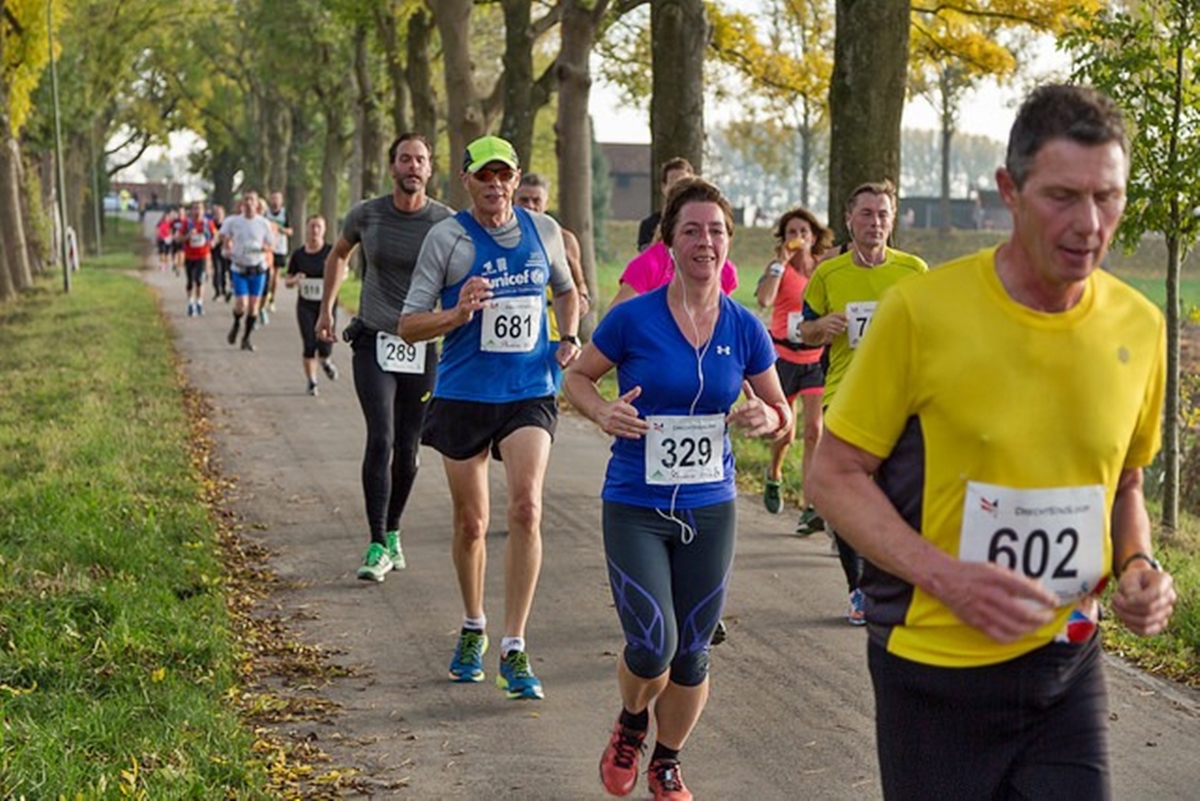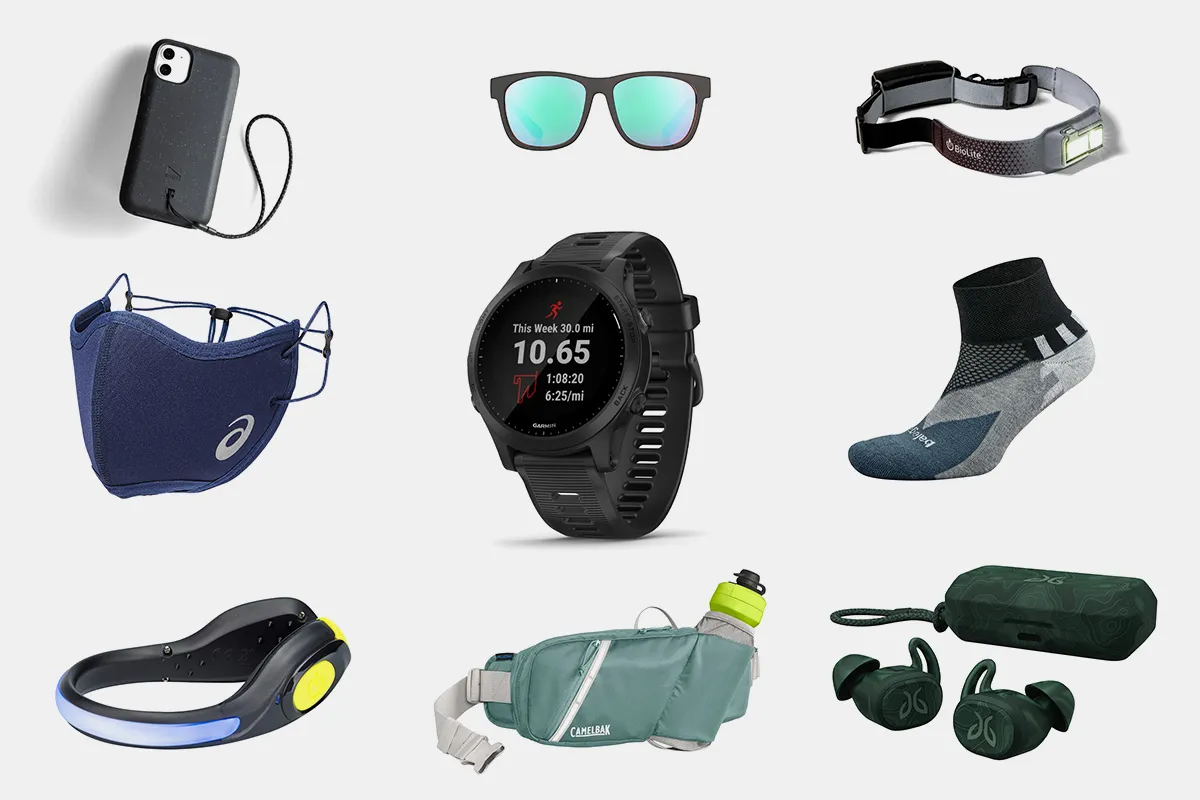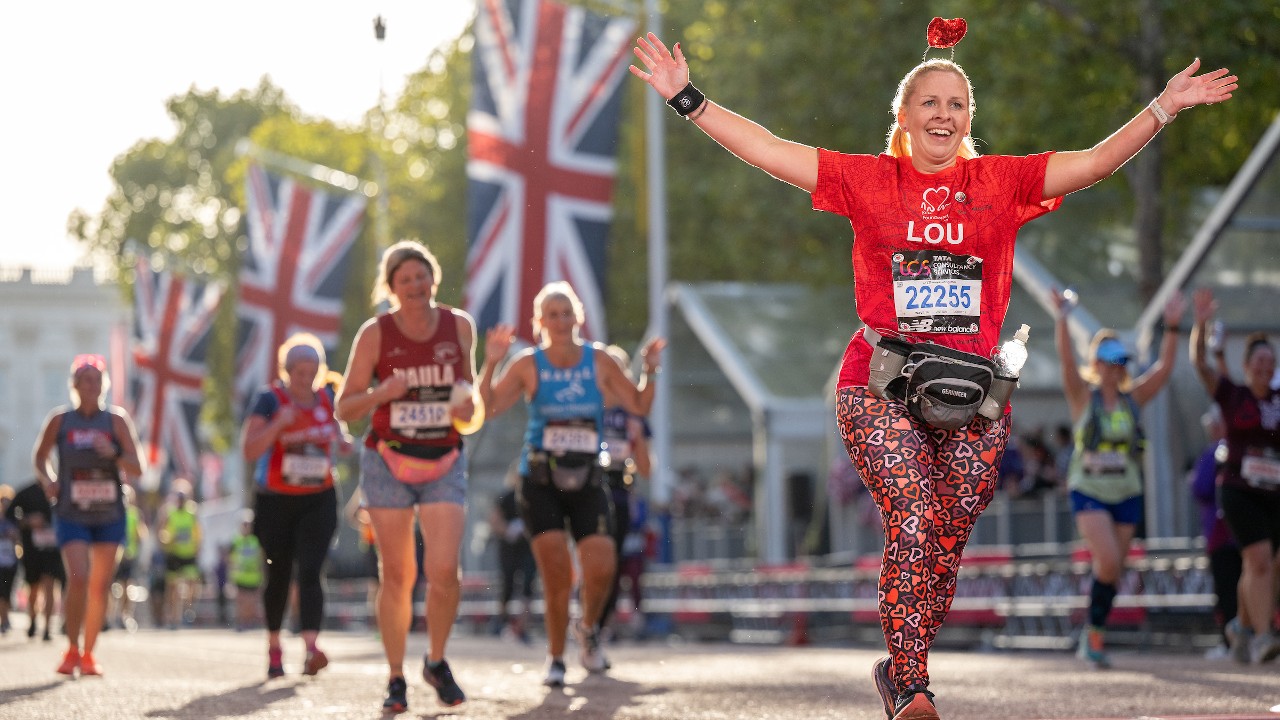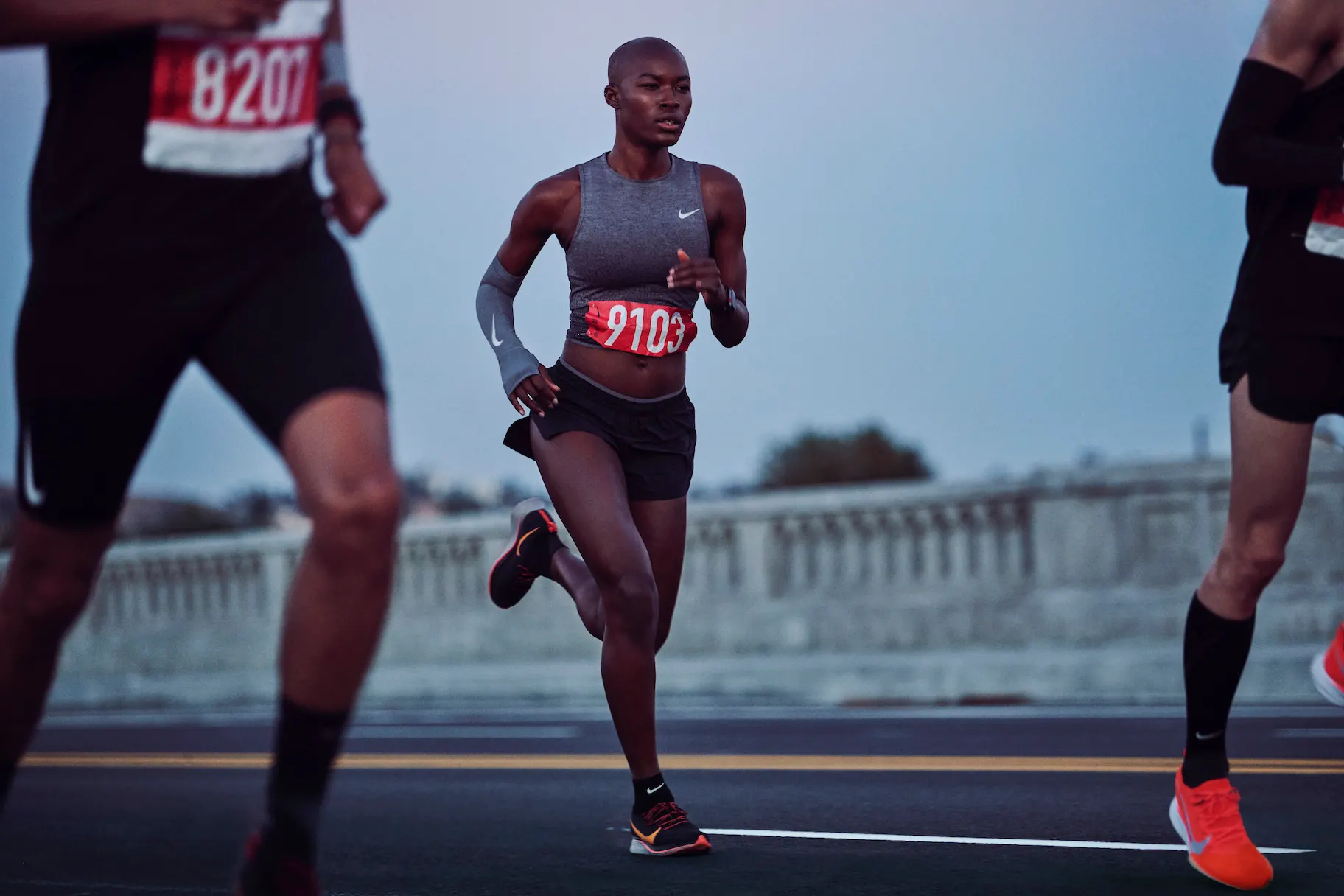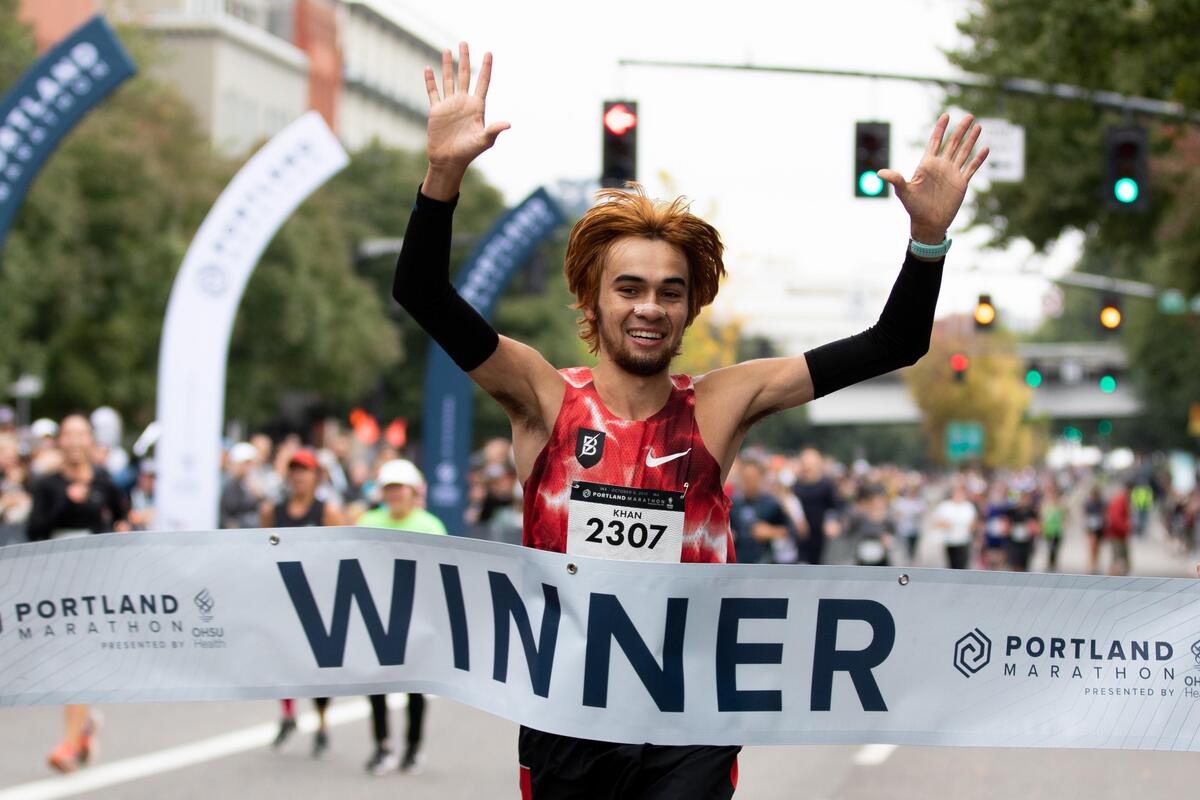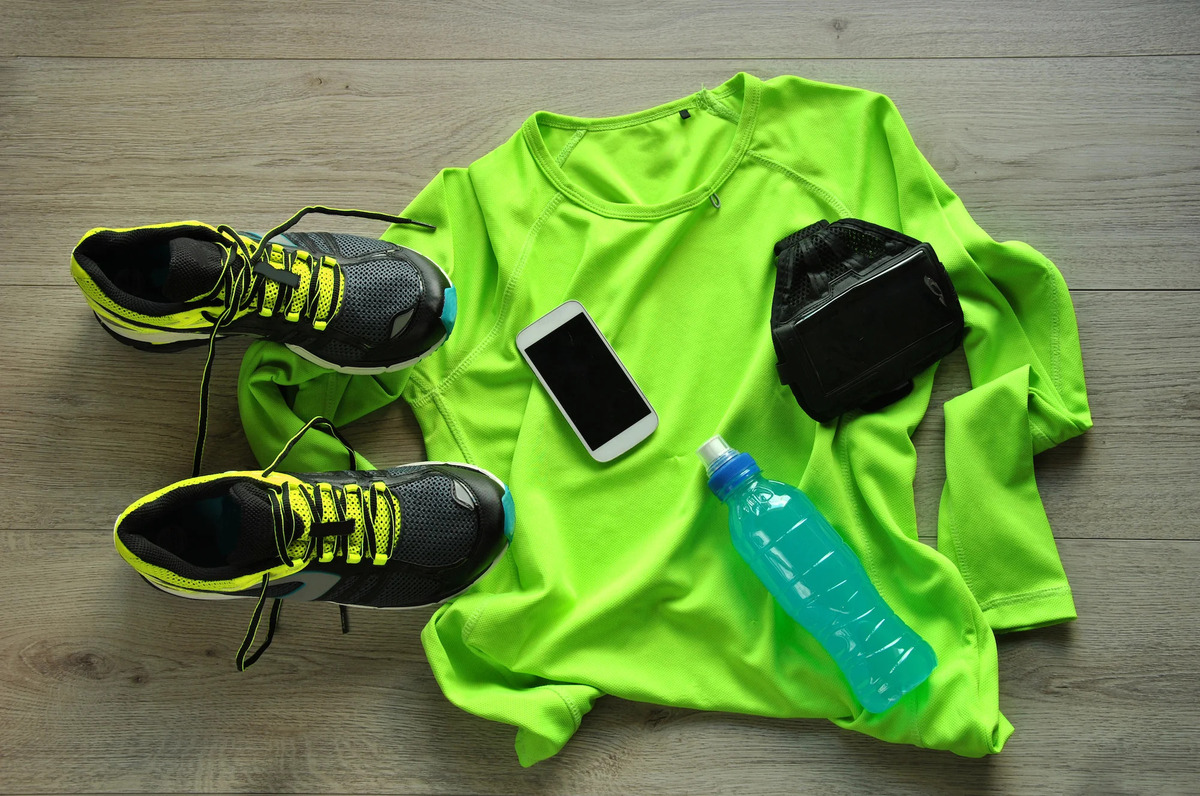

Featured
What To Pack For A Marathon
Modified: May 22, 2024
Discover the essential items to pack for a marathon in this comprehensive guide. Stay prepared and ensure a successful race with our featured packing tips.
Introduction
Preparing for a marathon involves more than just rigorous training and mental preparation; it also requires careful consideration of what to pack for the big race day. Having the right essentials packed can make a significant difference in your performance and overall experience. Whether you are a seasoned marathon runner or participating in your first race, this guide will help you navigate through the necessary clothing, gear, and supplies that should be included in your marathon packing list.
As you embark on your marathon journey, it’s crucial to prioritize comfort, functionality, and convenience when selecting what to pack. The items you choose should not only contribute to your physical performance but also help you stay organized and prepared for unexpected challenges along the way. From clothing and footwear to hydration and technology, each category plays an essential role in optimizing your marathon experience.
It’s important to note that every runner has unique needs and preferences, so feel free to make adjustments to the suggestions provided as you see fit. Without further ado, let’s dive into the different categories of items that should be on your marathon packing list to ensure you have everything you need for a successful race day.
Clothing and Apparel
When it comes to marathon running, choosing the right clothing and apparel is essential for optimal comfort and performance. Here are some key items to consider packing:
- Moisture-wicking shirts: Invest in lightweight shirts made of moisture-wicking fabric to keep you dry and comfortable throughout the race.
- Running shorts or leggings: Opt for breathable and flexible bottoms that allow for unrestricted movement.
- Compression socks or sleeves: These can help improve blood flow and reduce muscle fatigue, providing added support during long-distance running.
- Sports bra: For female runners, a supportive and comfortable sports bra is crucial for minimizing discomfort and providing adequate support.
- Hat or visor: Protect your face and eyes from the sun and keep sweat at bay with a lightweight hat or visor.
- Sunglasses: Opt for a pair of sports sunglasses that provide UV protection and a secure fit to shield your eyes from the sun and reduce glare.
- Lightweight jacket or long-sleeve shirt: Depending on the weather forecast, pack a lightweight jacket or long-sleeve shirt for cooler temperatures or unexpected rain.
Remember to consider the weather conditions and dress in layers. It is better to have an extra layer that you can take off if you get too warm rather than being underdressed and uncomfortable during the race.
Additionally, make sure to test out your marathon clothing during your training runs to ensure that they fit well and do not cause any discomfort or chafing. Comfort should be your top priority when selecting your marathon outfit.
Footwear
The right footwear is crucial for a successful marathon. Here are some key points to consider when choosing and packing your running shoes:
- Proper fit: Ensure that your running shoes fit properly and have enough room for your toes to move. Ill-fitting shoes can lead to discomfort, blisters, or even injuries during the marathon.
- Support and cushioning: Look for running shoes that provide adequate support based on your specific foot arch and running gait. Cushioned shoes can help absorb impact and provide a more comfortable running experience.
- Break-in period: It’s essential to break in your new running shoes before the marathon. Avoid wearing brand new shoes on race day to prevent blisters and discomfort.
- Weather considerations: If the forecast predicts rain, consider packing a pair of waterproof or water-resistant shoes. Similarly, for hot weather, look for shoes with breathable mesh to keep your feet cool and dry.
- Spare shoelaces: Don’t forget to pack an extra pair of shoelaces in case yours get damaged or come undone during the race.
- Specialized insoles or orthotics: If you have specific foot conditions or require additional support, consider using specialized insoles or orthotics inside your running shoes.
- Replacement shoes: If your marathon is a multi-day event, it’s wise to pack an additional pair of running shoes to give your feet a break and prevent excessive wear on a single pair.
Remember, comfort and functionality should always come first when selecting your marathon footwear. Take the time to research and try out different shoe models to find the perfect fit for your feet and running style.
Hydration and Nutrition
Proper hydration and nutrition are vital for sustaining energy and performance during a marathon. Here are some key considerations for packing the right hydration and nutrition items:
- Water bottle or hydration pack: Carry a water bottle or invest in a hydration pack that allows for easy access to fluids throughout the race. Ensure that it is comfortable to carry and has a sufficient capacity to meet your hydration needs.
- Electrolyte drinks or sports gels: Pack electrolyte drinks or sports gels to replenish electrolytes and provide a quick boost of energy during the race. Choose brands and flavors that you have tested and are comfortable consuming during intense exercise.
- Snacks and energy bars: Pack small, portable snacks such as energy bars, bananas, or trail mix to provide sustained energy during the marathon. Choose easily digestible options that you have tried and are compatible with your stomach.
- Salt or electrolyte tablets: If you are prone to cramping or sweat excessively, consider packing salt or electrolyte tablets to replenish sodium levels and prevent dehydration.
- Post-race recovery drink: Pack a post-race recovery drink to aid in muscle recovery and replenish nutrients after the marathon. Look for options that include protein and carbohydrates to help rebuild and refuel your body.
It’s important to practice your hydration and nutrition strategy during your training runs to determine what works best for you. Everyone’s needs are different, so it’s crucial to find the right balance of fluids and nutrients to sustain your energy levels throughout the race.
Remember to pay attention to your body’s signals and drink and eat at regular intervals to avoid dehydration and bonking. Proper hydration and nutrition can significantly impact your marathon performance and overall enjoyment of the race.
Race Essentials
When packing for a marathon, it’s important to include the following race essentials to ensure a smooth and successful race day:
- Race bib and safety pins: Don’t forget to pack your race bib and an ample supply of safety pins to secure it to your clothing. Check the race guidelines for specific instructions regarding bib placement.
- Timing device: If the marathon does not provide timing devices, pack a GPS watch or a smartphone app to track your pace and timing during the race.
- Route map: Review the marathon route beforehand and consider printing or downloading a map or course elevation profile. Familiarize yourself with the course to mentally prepare for any challenging segments.
- Identification and emergency contact information: Carry a form of identification, such as a driver’s license or ID card, and write down emergency contact information on a piece of paper or include it in your phone’s emergency contacts.
- Cash or payment method: Bring some cash or a credit card for any unforeseen expenses or emergencies during the race. This will also come in handy if you plan on purchasing snacks or drinks along the course.
- Safety pins or gel loops: Pack extra safety pins or gel loops to attach to your waistband or clothing to conveniently store energy gels or other small items.
- Sunscreen: Protect your skin from harmful UV rays by applying sunscreen before the race. Consider packing a small travel-size bottle to reapply during longer races.
- Pre-race snacks: If you have a specific pre-race routine or breakfast, pack the necessary snacks or ingredients to ensure you have proper fuel before the marathon.
Always double-check the race guidelines to ensure there are no prohibited items or specific recommendations that should be accounted for in your packing list. These race essentials will help you stay organized, prepared, and focused on the task at hand.
First Aid and Injury Prevention
Taking care of your body during a marathon is crucial to prevent injuries and ensure a safe and successful race. Here are some first aid and injury prevention essentials to include in your marathon packing list:
- Blister patches or bandages: Pack blister patches or bandages to protect and treat any potential blisters that may develop during the race. Consider packing different sizes to accommodate various blister locations.
- Pain relief medication: Carry over-the-counter pain relievers such as ibuprofen or acetaminophen to address any discomfort or pain that may arise during the marathon. However, make sure to consult with a healthcare professional beforehand and follow the recommended dosage.
- Anti-chafing cream or petroleum jelly: Apply anti-chafing cream or petroleum jelly to areas prone to friction, such as thighs, underarms, or nipples, to prevent uncomfortable chafing during the race.
- Kinesiology tape or athletic tape: Pack kinesiology tape or athletic tape to provide additional support or assist in injury prevention. Familiarize yourself with proper taping techniques or consult a healthcare professional for guidance.
- Ice pack or instant cold packs: Include an ice pack or instant cold packs in your marathon packing list to address any acute injuries or to help reduce inflammation post-race.
- Compression gear: Consider packing compression socks, sleeves, or tights to aid in muscle recovery and reduce post-race soreness. These garments can also assist in improving circulation during the race.
- Foam roller or massage ball: If space allows, bring a foam roller or massage ball to help alleviate muscle tightness and soreness before and after the marathon.
It’s important to note that these first aid items are meant for minor injuries or discomforts. If you experience any serious or persistent pain during the marathon, it’s advisable to seek medical assistance from the race medical team or professionals along the course.
Remember to listen to your body, pace yourself, and take the necessary precautions to prevent injuries. Prioritize your well-being to ensure a safe and enjoyable marathon experience.
Personal Care and Hygiene
Personal care and hygiene are essential aspects of marathon preparation to help you feel fresh, comfortable, and confident throughout the race. Here are some personal care items to include in your marathon packing list:
- Towel or disposable wipes: Pack a small towel or disposable wipes to wipe off sweat, clean your face, or freshen up during or after the race.
- Deodorant: Choose a travel-size deodorant to keep odor at bay and stay fresh during the marathon.
- Extra clothing and undergarments: Bringing an extra set of clothing, including undergarments, allows you to change into clean and dry clothes after the race. This will help prevent chafing and promote post-race comfort.
- Hand sanitizer: Carry a small bottle of hand sanitizer to keep your hands clean, especially before consuming any post-race snacks or meals.
- Tissues or toilet paper: In case restroom facilities along the race route run out of supplies, it’s helpful to have some tissues or toilet paper on hand.
- Lip balm: Protect your lips from dryness and chapping by packing a lip balm with SPF to shield them from the sun.
- Hair accessories: If you have long hair, bring hair ties, headbands, or a hat to keep your hair out of your face and prevent discomfort during the race.
- Personal hygiene products: Depending on your needs, pack any necessary personal hygiene items such as menstrual products or contact lens supplies.
Having these personal care items readily available can make a significant difference in your comfort level throughout the marathon. Taking care of your personal hygiene ensures that you can fully focus on your performance and enjoy the race experience.
Technology and Gadgets
Technology and gadgets can be valuable tools for marathon runners, providing valuable information and enhancing the overall race experience. Here are some technology and gadget essentials to consider including in your marathon packing list:
- GPS watch: A GPS watch is a must-have for tracking your distance, pace, and overall performance during the marathon. Choose a watch that suits your preferences and provides the necessary data for pacing yourself effectively.
- Smartphone: Your smartphone can serve multiple purposes throughout the race. It can be used for navigation, listening to music or podcasts, as a backup timing device, and for emergency communication.
- Headphones: If you plan on listening to music or podcasts during the race, pack comfortable and secure-fitting headphones that won’t easily come off or cause discomfort during your run.
- Portable charger or extra batteries: To ensure your devices stay powered during the marathon, bring a portable charger or extra batteries for your GPS watch, smartphone, or other gadgets.
- Heart rate monitor: If you monitor your heart rate during training, consider wearing a heart rate monitor during the marathon to help pace yourself and monitor your effort levels.
- Running apps: Familiarize yourself with running apps that can provide additional insights into your performance and help you stay motivated during the race. Some popular options include Strava, Nike Run Club, or Runkeeper.
- Wireless headphones: If you prefer a wireless setup, invest in Bluetooth-enabled headphones for a tangle-free and hassle-free running experience.
- Portable music player: If you prefer not to rely on your smartphone, a compact and lightweight music player can be a great alternative for listening to music during the marathon.
Remember to familiarize yourself with any rules or guidelines set by the marathon organizers regarding the use of technology and gadgets. Some races may have specific restrictions on headphones or external devices, so it’s essential to adhere to those rules and ensure a fair and safe race for everyone.
Technology and gadgets can enhance your marathon experience, but it’s also important not to be overly reliant on them. Strike a balance between utilizing technology and staying present in the race to fully enjoy the journey.
Miscellaneous Items
In addition to the essentials mentioned earlier, there are several miscellaneous items that can come in handy during a marathon. Consider including the following items in your marathon packing list:
- Safety pins or clips: Pack extra safety pins or clips to secure your bib and prevent it from coming loose during the race.
- Race belt: A race belt is a convenient accessory for attaching your bib without the need for safety pins. It allows for easy adjustment and quick access to your bib number.
- Spectator sign or motivational signs: If you have friends or family members coming to cheer you on, consider bringing a small spectator sign or inspirational signs to spot them easily along the course.
- Extra plastic bags: Pack some spare plastic bags to store wet or muddy clothes, garbage, or to keep your belongings dry in case of rain.
- Cash or credit cards: Have some cash or credit cards on hand for emergencies, purchasing race merchandise, or post-race refreshments.
- Camera or smartphone for photos: If you want to capture memorable moments during the race or at the finish line, bring a camera or ensure that you have a fully charged smartphone with a high-quality camera.
- Body glide or anti-blister balm: Apply body glide or anti-blister balm to areas prone to chafing or blisters. This will help prevent discomfort during the race.
- Extra shoelaces: Pack an extra pair of shoelaces in case yours break or become damaged during the marathon.
- Portable phone charger: If you plan on using your smartphone throughout the race, a portable phone charger can help ensure that you stay connected and have a charged device at all times.
These miscellaneous items may seem small, but they can make a big difference in your overall race day experience. Don’t overlook their importance and pack them accordingly to be prepared for any situation that may arise during the marathon.
Conclusion
Preparing for a marathon involves more than just physical training; it also requires careful consideration of what to pack for race day. By including the right essentials, you can enhance your comfort, performance, and overall experience during the marathon.
In the clothing and apparel section, we discussed the importance of choosing moisture-wicking shirts, breathable bottoms, and supportive sports bras. We also highlighted the significance of proper footwear, emphasizing the need for a proper fit, support, and cushioning.
Hydration and nutrition are crucial for sustaining energy during the marathon. We recommended packing a water bottle or hydration pack, electrolyte drinks or gels, and portable snacks to replenish fluids and fuel your body.
First aid and injury prevention essentials, such as blister patches, pain relief medication, and compression gear, are vital for addressing minor discomforts and promoting a safe and injury-free race.
In terms of personal care and hygiene, we stressed the importance of carrying wipes, deodorant, extra clothing, and hand sanitizer to stay fresh and comfortable throughout the marathon.
Technology and gadgets, such as GPS watches, smartphones, and headphones, can provide valuable information and entertainment during the race, enhancing your overall experience.
Finally, we discussed the value of packing miscellaneous items such as safety pins, spectator signs, plastic bags, and extra shoelaces. These items can be convenient and come in handy during the marathon.
Remember, this marathon packing list is meant to serve as a guide, and you can customize it according to your personal preferences and needs. Pack smartly, test out your gear during training runs, and prioritize your comfort and performance. With the right essentials, you’ll be well-prepared for a successful and enjoyable marathon experience!
